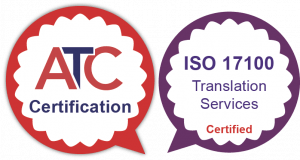High-stakes assessments play a pivotal role across a multitude of domains, from education to healthcare, immigration, and the corporate world. They are the gatekeepers to opportunities, decisions, and qualifications. But for these assessments to fulfil their intended purpose across multiple countries, one element often stands out as critical: translation accuracy. When translated assessments are administered in languages other than the original, ensuring that the translations are faithful to the source material becomes a high-stakes endeavour in itself. The main consideration becomes maintaining the assessments’ validity, fairness and reliability, regardless of the language spoken by the examinee.
In this post, we dive into a popular methodology employed to bridge the linguistic and cultural gaps in high-stakes assessments: forward translation and back translation. We explore the intricacies of this translation process, examining their potential to enhance translation quality, while considering some of aspects that it potentially does not address.
Hopefully, by the end of this post, you’ll have a deeper understanding of the strategies and considerations that underpin the use of forward translation and back translation, and whether they truly deliver on the promise of improved translation quality.
What is Forward Translation?
Forward translation serves as the initial step in the complex process of ensuring accurate and culturally relevant translations of high-stakes assessments. In essence, it’s the process of transforming the source language (the language of the original assessment) into a target language, the language in which the assessment is to be administered. This forward translation is a critical stage in the whole process, as it is the underpinnings of the finalised translation.
At its core, forward translation is more than a simple word-for-word conversion. It involves the expertise of qualified translators and linguistic experts who meticulously consider the nuances, idiomatic expressions, and cultural contexts of both the source and target languages. These experts aim to not only maintain linguistic fidelity but also capture the cultural relevance of the content. This process ensures that the translated assessment resonates with the test-takers in the target language, avoiding any potential biases or misunderstandings. The success of forward translation depends on the translator’s skill, cultural sensitivity, and domain knowledge, as well as their ability to faithfully represent the intent of the source text.
While forward translation is an essential step in the journey toward accurate translations of high-stakes assessments, it is not without its challenges. Even the most skilled translators can encounter hurdles such as linguistic subtleties that don’t have direct equivalents in the target language or cultural references that may not translate well. The potential for misinterpretations or inaccuracies underscores the need for a comprehensive and meticulous approach to forward translation.
To mitigate these challenges and maximise the quality of the translation, forward translation is rarely used in isolation in an assessment translation process. Prior to translation, a pre-translation analysis, or conceptual analysis may be carried out, to lock down the definition of ambiguous or important terminology. For example, without further context (as is often the case in a verbal reasoning assessment), does the word “clear” mean “transparent” or “understandable”? This can be better defined in a pre-translation or translatability analysis.
The forward translation would often then be followed by a rigorous review process, and this is where back translation comes into play, as we’ll explore shortly.
What is The Role of Back Translation?
As we have already mentioned, forward translation is only one of the component parts of the journey towards linguistic and cultural appropriateness in the area of high-stakes assessment translations. The true litmus test of translation quality comes after the process of back translation. Back translation serves as a vital quality control measure that helps to evaluate and fine-tune the initial translation.
Back translation involves translating the target text (i.e. a first draft of the translated version of the assessment), back into the source (original) language. This seemingly redundant step serves a distinct purpose – it is a means of validating the accuracy of the forward translation by getting an external linguist who was not involved with the original translation to see how they understand it.
The goal of back translation is not to create an alternative translation but to act as a “mirror” that reflects the translated content. By having a different translator or team perform the back translation, it introduces an independent perspective into the process. This fresh set of eyes helps identify any discrepancies, inconsistencies, or errors in the forward translation. It’s a method of cross-checking to ensure that the original meaning and intent of the source text are maintained in the translation.
When using back translation, the translations are deemed acceptable if the back translation matches the original source text in its underlying meaning. It also requires the language being used in the back translation to be unambiguous. Of course, this does not necessarily mean the forward translation is always correct, as some errors may still be masked in the back translation.
The value of back translation becomes evident when it uncovers disparities between the forward and back translations. These disparities might signal a need for revision, clarification, or further cultural adaptation to ensure that the assessment functions properly in the target language.
While the primary aim is to assess the accuracy of the translation, back translation also highlights cultural nuances and potential ambiguities, offering a deeper level of insight into the cultural and linguistic relevance of the assessment in the target language.
Pros and Cons of Forward and Back Translation
As with any translation process, forward translation and back translation come with their own set of advantages and challenges. In this section, we’ll explore the pros and cons of using this approach to improve translation quality.
The forward and back translation process can be and often is resource-intensive. It requires the involvement of translators, proofreaders, quality assurance experts, and a thorough review process. This can result in higher costs and longer project timelines than a forward translation only process, which must be allowed for if a high-quality, defensible end product is demanded.
However, back translation serves as a valuable quality control mechanism where there are limited internal bilingual subject matter experts or resources available to perform validation. This enables the identification and correction of discrepancies or errors in the forward translation by a QA specialist. This iterative process helps refine the translated version and increase its accuracy by querying each translator’s understanding of the text.
One other notable advantage of the forward and back translation process is the ability to review the translated content in the original language. Back translation provides a unique opportunity to assess how well the original meaning and intent have been preserved, and this can be done by subject matter experts within the organisation originally requesting the translation.
Having the ability to review the translation in the original language highlights the importance of maintaining the source text’s integrity, thereby contributing to the overall quality of the translation in high-stakes assessments.
Nonetheless, despite the best efforts of skilled translators, there is always a potential for misinterpretation or loss of subtle nuances in translation. Achieving a perfectly equivalent translation, especially for complex or context-specific content, can be challenging. This is where it is not just about the process, but also the linguistic resources chosen for a given project.
Back translation is sometimes seen as a controversial process, since when translators and quality assurance (QA) checkers lack the requisite skills and expertise in back translation they may misinterpret the purpose of what they are doing, or even misinterpret the content, resulting in inaccurate translations that deviate from the original meaning. Likewise, they may not be skilled in identifying and querying potential errors with the translation teams, leading to the forward and back translation process not performing as a reliable quality control measure. Hence, it is crucial to have a team of skilled and experienced experts to ensure the efficacy of the back translation process.
Back translation may also not reveal all of the potential omissions or errors in a forward translation – in our previous example of the translation of “clear”, it may be that the forward translator chose the wrong meaning in the original translation, and the back translation masked this because in either case the back translator could have chosen the same word as the original text, so an error in the forward translation would not be visible in the back translation to a non-native speaker.
In essence, forward translation and back translation can work in tandem to refine the translated version of high-stakes assessments. This combination is by no means a perfect solution, but it does add an additional level of scrutiny when carried out by a skilled translation team. By integrating this quality control measure, organisations can enhance the reliability and fairness of assessments administered to diverse language groups, ultimately preserving the integrity and purpose of high-stakes evaluations.
Alternatives to Forward and Back Translation
While forward and back translation have proven to be valuable tools in ensuring the quality of translated high-stakes assessments, there are several potential alternatives and the ever-changing world of technology gives scope for future developments. Two prominent alternatives that are currently often considered are dual forward translation or a forward translation followed by a bilingual subject matter expert review.
In the dual forward translation approach, two separate translators independently translate the source text into the target language. This method introduces a degree of cross-verification, as the two separate translations are then compared and reconciled to create a final version. Dual forward translation aims to reduce the likelihood of errors or misinterpretations through statistical probability and is particularly effective when expert translators with diverse backgrounds collaborate.
In the SME translation review approach, after the initial forward translation, a bilingual subject matter expert familiar with the content’s domain reviews and refines the translated material. This expert brings a deep understanding of the subject matter, ensuring that technical or specialised terms are accurately conveyed in the target language. Their insights can contribute to more precise and contextually-appropriate translations, but as they are not linguists, they may introduce spelling or grammatical errors that must be proofread out by a linguist in a final review.
These alternatives offer additional layers of quality control and domain-specific expertise, addressing some of the challenges and limitations associated with the traditional forward and back translation process that uses linguists with more broad expertise.
However, the alternatives also come with their own considerations and resource requirements (such as the time required by an internal SME to thoroughly review a translation), which organisations and translation teams should carefully factor in when making decisions.
Conclusion
High-stakes assessments, whether a certification exam or in healthcare, immigration or business, are critical gateways that can open doors of opportunity or lead to closed pathways of discrimination. Ensuring the accuracy of translated versions of these assessments is not just a matter of convenience; it is a matter of upholding the principles of equity, diversity and inclusivity.
There is no “right” or “wrong” answer as to whether a forward and back translation process is the right choice in all cases. However, we have seen its potential to improve the quality of translation of high-stakes assessments. We’ve delved into the significance of these assessments, the intricacies of forward translation, the role of back translation, and the pros and cons of this approach. We’ve also highlighted the invaluable ability to review translations in the original language to maintain fidelity to the source text.
The forward and back translation process, with its checks and balances, represents a valuable methodology to navigate the challenges of linguistic and cultural diversity in high-stakes assessments.
Looking forward, we anticipate advancements in technology, harmonisation of practices, and new approaches to enhance the quality of translated assessments. The key to success lies in striking a balance between linguistic precision, cultural relevance, and practicality. In doing so, we can ensure that high-stakes assessments remain a beacon of fairness, equality and opportunity for all, regardless of language or cultural background.




